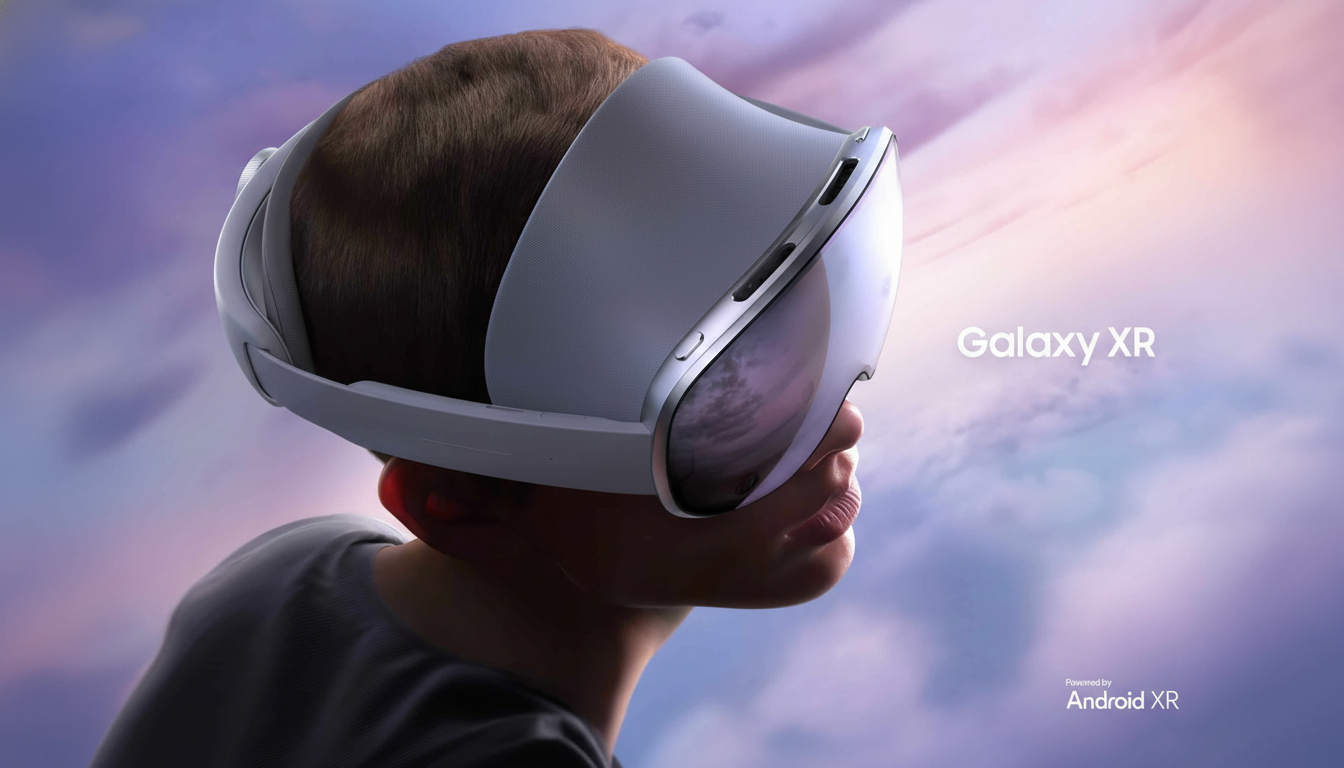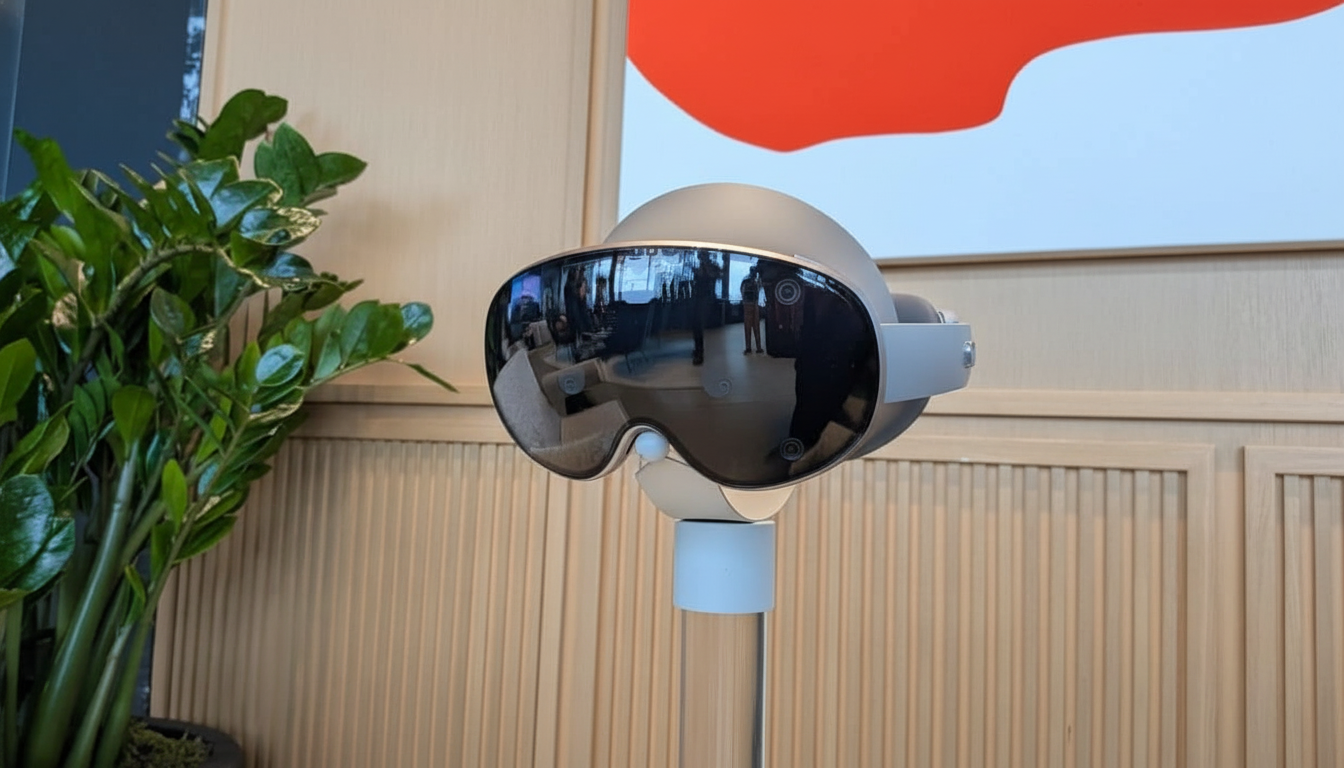I got to try Samsung’s Galaxy XR headset and I walked away confident that it is a flagship mixed reality device, fit for astronauts and Google-compatible AR developers alike, as well as a bridge to more casual smart glasses you might use every day.
The headset, which was made in partnership with Google and Qualcomm, and runs on Android XR, relies heavily on an integrated Gemini assistant and high-fidelity passthrough to demonstrate what spatial computing can bring when AI is the focal point of the experience.
- What the Galaxy XR Headset Gets Right in Real Use
- Immersion Versus Utility in Everyday XR Experiences
- The Role of Smart Glasses in the XR Ecosystem
- AI as the Unifying Layer Across Headsets and Glasses
- The Competitive Context for Samsung’s Galaxy XR Push
- Bottom Line: A Strong Start for Samsung’s Galaxy XR

What the Galaxy XR Headset Gets Right in Real Use
Passthrough is the headline. With a clear, detailed 4K-per-eye digital layer, the experience feels moored and real. Text on the other side of the room remains legible, lighting is realistic and virtual objects don’t drift. Occlusion and edge artifacts, for example, are miles better than on earlier prototypes I’ve tested, which helps to make the mix of real and rendered feel less like a demo and more like a potential workspace.
There are practical ways Gemini is woven into the OS. I could invoke it by voice or with a button press, open apps (though in an unwieldy grid), arrange my space precisely—I even found myself doing Circle to Search gestures on things in passthrough mode, including physical objects viewed through the camera. Samsung pitches a lot of this as on-device AI, though—like phones—some heavy lifting is still done in the cloud. It has sufficiently low latency that the assistant feels present, not periodic.
Hand tracking was the one step back in my demo. I found that when I kept my hands higher in the field of view, it was far more accurate, but if I rested them on my lap then gestures were missed. It’s not a dealbreaker, but it is a reminder that input is still the unsolved problem of spatial interfaces and why voice and gaze are becoming more important.
Immersion Versus Utility in Everyday XR Experiences
Headsets excel at immersion. Galaxy XR can transform a monochrome photo into an animated memory full of depth and it can turn flat video into 3D images with believable dimensions, all in real time thanks to approximately 20 milliseconds of processing time. When I tested it with a fast-moving sports clip, there were some misalignment artifacts during rapid movement—which was to be expected for an early work-in-progress feature—but the effect absolutely sings for cinematic viewing, as well as design and training.
But a headset is not what you throw on to navigate a busy city in translation or quick capture. That much is evident, given social acceptability, weight and battery limitations. The result is a clean division: headsets for deep tasks, fully immersing users in entertainment at home or the office; glasses providing ambient, out of eyesight support everywhere else.
The Role of Smart Glasses in the XR Ecosystem
Think division of labor. Galaxy XR is the workstation—3D content creation, meetings that require shared spatial context, media consumption in new dimensions and large virtual displays. Smart glasses are the status bar—turn-by-turn directions, live transcription, glanceable notifications, hands-free photos and short videos, just-in-time prompts.

We already see the outlines. Camera-forward glasses from large companies have made face-worn tech seem less weird, and productivity-focused models are moving toward lightweight head-up displays. The headset works to prepare you for spatial thinking, and the glasses are an expression of it that you can wear all day. For businesses, that match is even more obvious: remote assistance and training in XR; inspections, checklists and real-time direction on job sites via glasses.
AI as the Unifying Layer Across Headsets and Glasses
AI that bridges these two camps is the real magic. In Galaxy XR, Gemini is something of a spatial co-pilot, an entity that knows what I’m looking at and what’s on my screen and can respond to both. On glasses, such a model can also become real-world-aware—identifying objects, offering context, translating signs or giving you the gist of whatever is before you. It’s in line with a larger industry trend, too, as OSes bake assistants deep into core navigation—like Android continues to do in the XR realm (Augmented Reality and Virtual Reality), practically putting it on par with Apple’s offering—and even what Microsoft is doing in Windows 11 with Copilot.
Tie that to the headset’s real-time spatialization and you get a roadmap: what’s bulky today is already the lab where AI perception, multimodal input, and spatial UX are perfected. Tomorrow’s sunglasses take that functionality and epitomize it in a package that fits your life.
The Competitive Context for Samsung’s Galaxy XR Push
Samsung eschews the open road, veering its approach toward Apple’s premium lane and going along with Google software and Qualcomm silicon. Bloomberg has reported Apple is looking into smart glasses as a long-term bet, emphasizing how the industry sees glasses as an eventual mainstream resting place. In the meantime, consumer-friendly eyewear from other players shows the path to mainstream social acceptability that headsets have yet to summit.
Market watchers anticipate momentum will pick up as platforms mature. IDC is predicting a recovery in AR/VR headset shipments with strong growth over the next year following a decline, encouragingly due to new mixed reality devices and wider developer interest. That background lends itself to a two-device future: a heavy headset for immersion and light glasses that replace existing displays, with ambient utility.
Bottom Line: A Strong Start for Samsung’s Galaxy XR
Galaxy XR is a bold first effort that shows Samsung will produce sharp passthrough, decent spatial anchoring and an AI-first interface. It also argues for coexistence. The former will own immersive computing; the latter, everyday assistance. Gemini is the tie that binds, and yet for all that, Samsung’s headset feels less like an endpoint in its own right than a starting point: an on-ramp to wearables most people are going to find tolerably acceptable while out in public.

